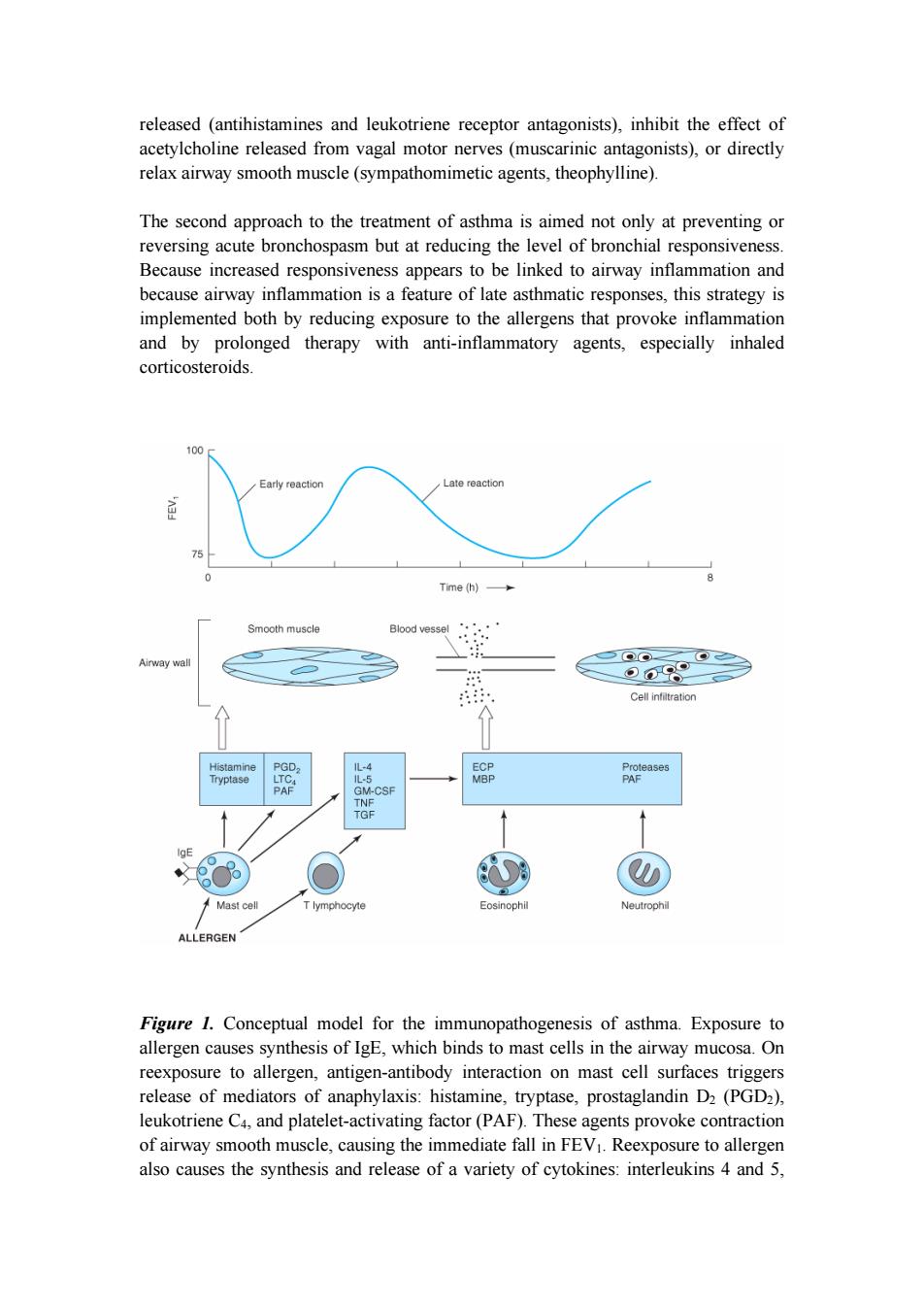正在加载图片...

released (antihistamines and leukotriene receptor antagonists),inhibit the effect of acetylcholine released from vagal motor nerves (muscarinic antagonists),or directly relax airway smooth muscle (sympathomimetic agents,theophylline). The second approach to the treatment of asthma is aimed not only at preventing or reversing acute bronchospasm but at reducing the level of bronchial responsiveness. Because increased responsiveness appears to be linked to airway inflammation and because airway inflammation is a feature of late asthmatic responses,this strategy is implemented both by reducing exposure to the allergens that provoke inflammation and by prolonged therapy with anti-inflammatory agents,especially inhaled corticosteroids. 100 Early reaction Late reaction 75 Time (h)多 Smooth muscle Blood vessel Airway wal ⊙09 Cell infiltration Histamine PGD, 儿-4 ECP Proteases Tryptase LTC. L-5 MBP PAF PAF GM-CSF TNF TGF Mast cell T lymphocyte Eosinophil Neutrophil ALLERGEN Figure 1.Conceptual model for the immunopathogenesis of asthma.Exposure to allergen causes synthesis of IgE,which binds to mast cells in the airway mucosa.On reexposure to allergen,antigen-antibody interaction on mast cell surfaces triggers release of mediators of anaphylaxis:histamine,tryptase,prostaglandin D2(PGD2), leukotriene C4,and platelet-activating factor(PAF).These agents provoke contraction of airway smooth muscle,causing the immediate fall in FEV1.Reexposure to allergen also causes the synthesis and release of a variety of cytokines:interleukins 4 and 5,released (antihistamines and leukotriene receptor antagonists), inhibit the effect of acetylcholine released from vagal motor nerves (muscarinic antagonists), or directly relax airway smooth muscle (sympathomimetic agents, theophylline). The second approach to the treatment of asthma is aimed not only at preventing or reversing acute bronchospasm but at reducing the level of bronchial responsiveness. Because increased responsiveness appears to be linked to airway inflammation and because airway inflammation is a feature of late asthmatic responses, this strategy is implemented both by reducing exposure to the allergens that provoke inflammation and by prolonged therapy with anti-inflammatory agents, especially inhaled corticosteroids. Figure 1. Conceptual model for the immunopathogenesis of asthma. Exposure to allergen causes synthesis of IgE, which binds to mast cells in the airway mucosa. On reexposure to allergen, antigen-antibody interaction on mast cell surfaces triggers release of mediators of anaphylaxis: histamine, tryptase, prostaglandin D2 (PGD2), leukotriene C4, and platelet-activating factor (PAF). These agents provoke contraction of airway smooth muscle, causing the immediate fall in FEV1. Reexposure to allergen also causes the synthesis and release of a variety of cytokines: interleukins 4 and 5